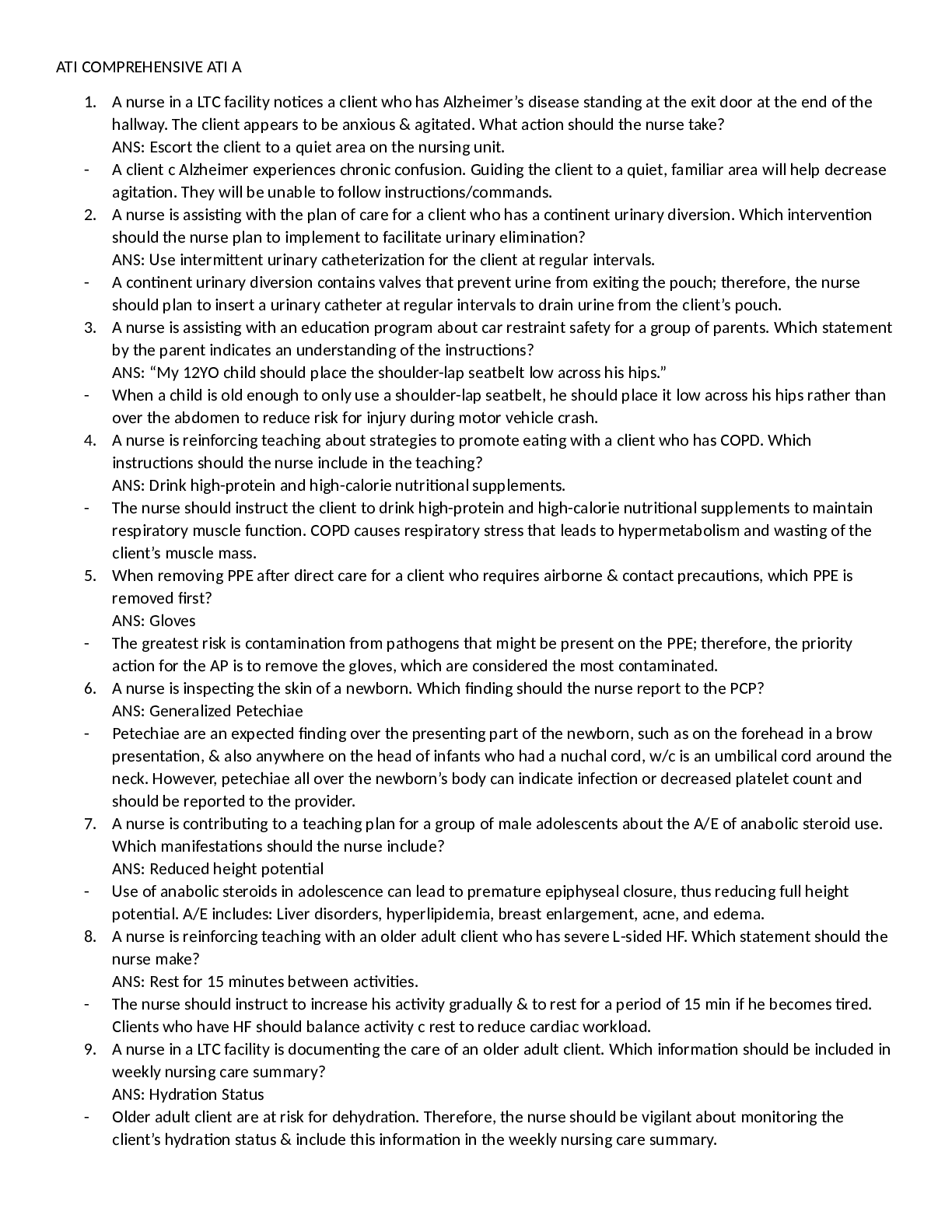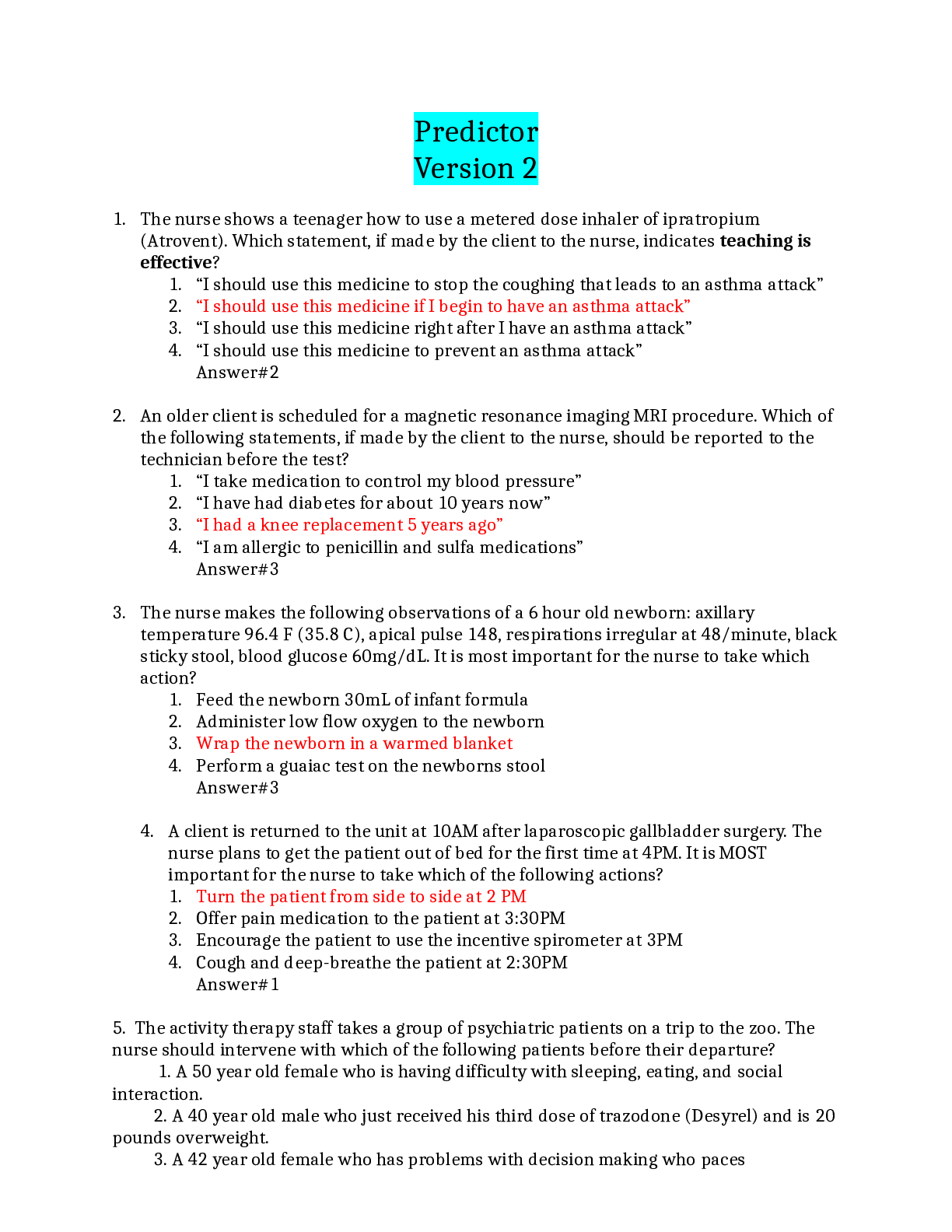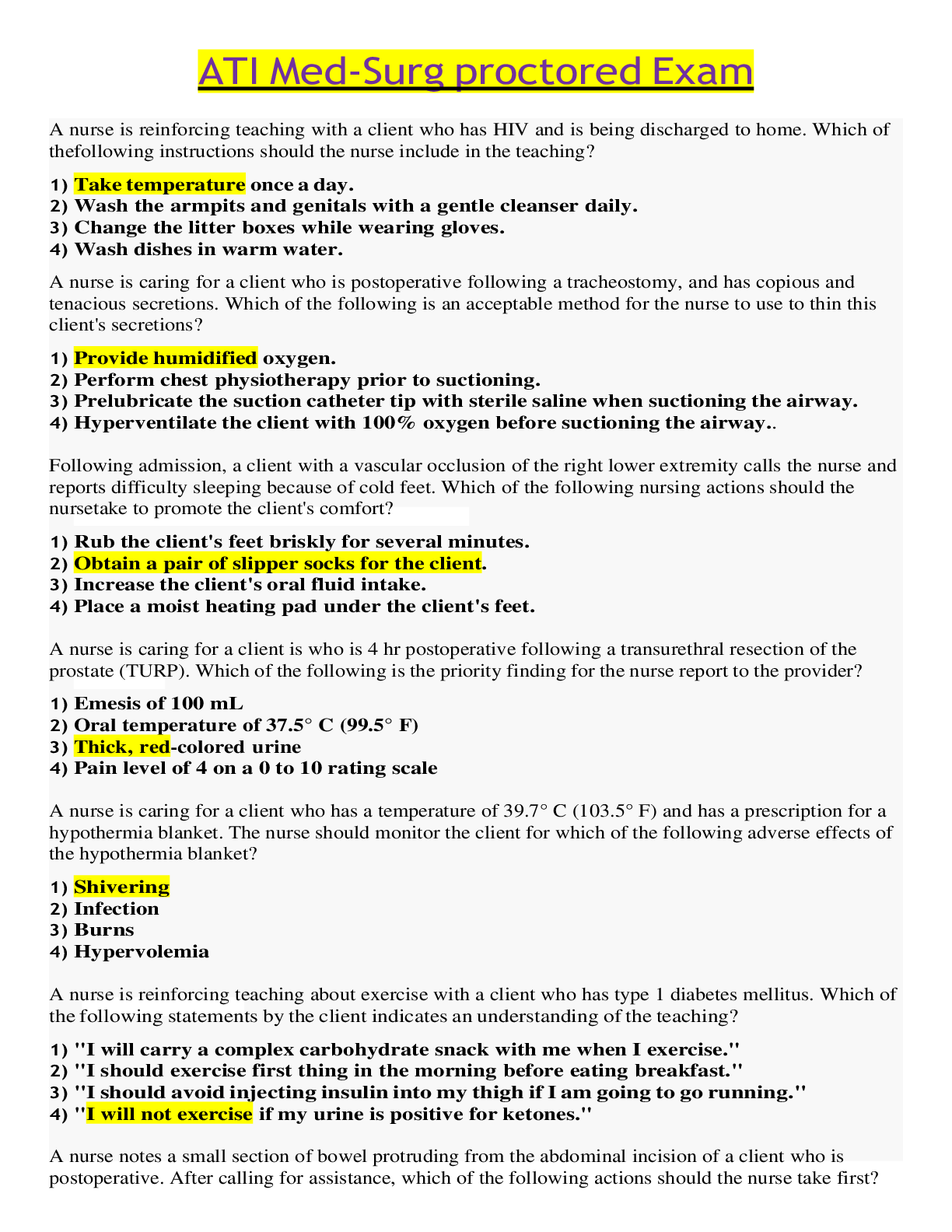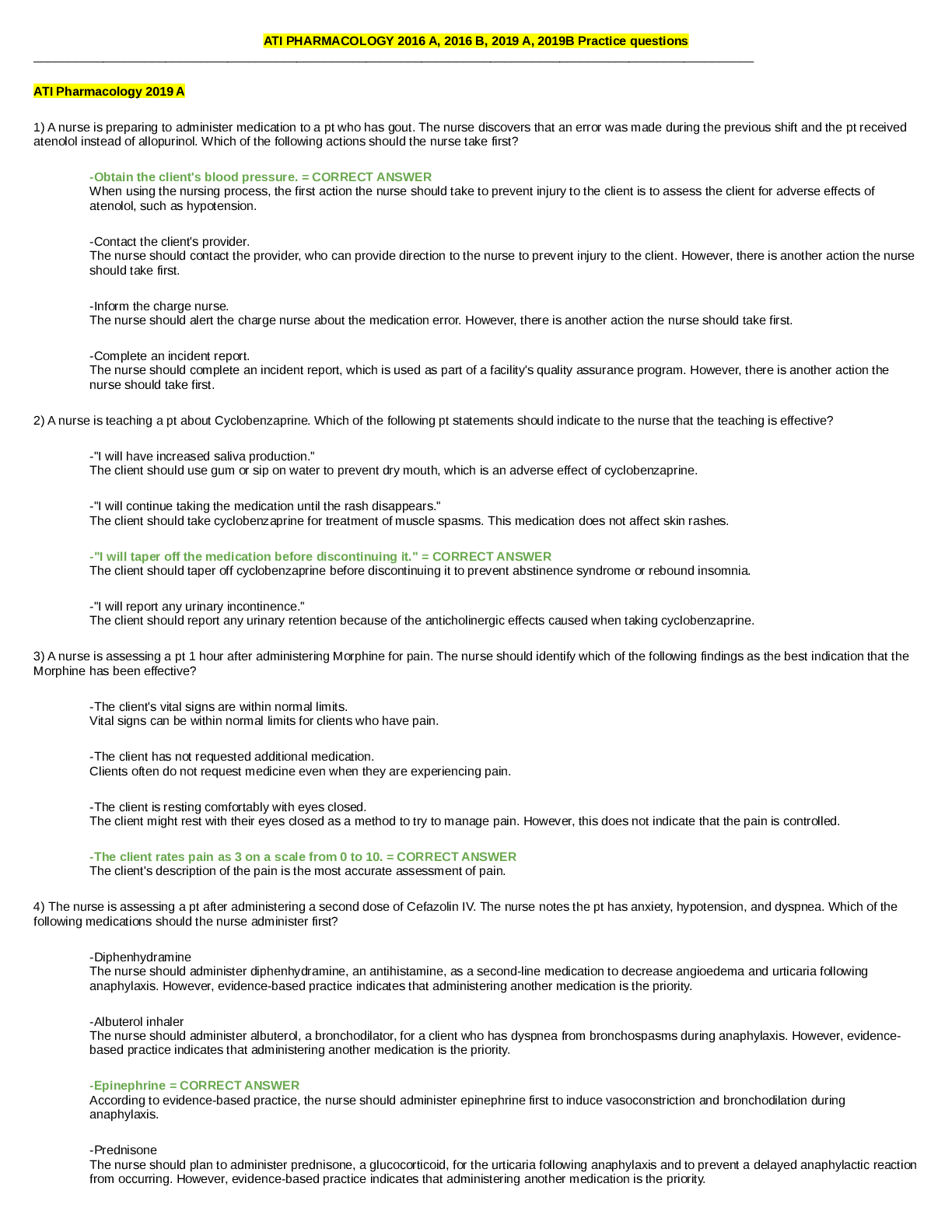*NURSING > ATI MEDICAL SURGICAL > ATI Nutrition Proctor GUIDE 2021/2022 (All)
ATI Nutrition Proctor GUIDE 2021/2022
Document Content and Description Below
PART 1: GENERAL NOTES (Important Facts) • Be wary of questions regarding children drinking too much milk i.e. more than 3-4 cups of milk each day. Too much milk intake reduces intake of other esse n... tial nutrients, especially iron. Watch for anemia with milk-aholics. • Vitamin D’s presence is required by the parathyroid gland, in order for it to function. • If the patient is taking digoxin or K-supplements, avoid salt substitutes because many are potassium based • Potassium Sources: bananas, potatoes, citrus fruits • No milk (as well as fresh fruit or veggies) on neutropenic precautions. • Nondairy sources of calcium include RHUBARB, SARDINES, COLLARD GREENS 24 • Nonfat milk reduces reflux by increasing lower esophageal sphincter pressure • Yogurt has live cultures, so do not give to immunosuppressed patients • No phenylalanine with a kid positive for PKU (no meat, no dairy, no aspartame). • Acid Ash diet: cheese, corn, cranberries, plums, prunes, meat, poultry, pastry, bread • Alk Ash diet: milk, veggies, rhubarb, salmon PART 2: Focused Review Notes Manifestations of Vitamin A Toxicity Can cause teratogenic effects on fetuses Blurred vision Bone pain or swelling Hypercalcemia ICP Liver damage Skin peeling, itching Nausea and vomiting Abnormal softening of the skull bone (children) and bulging fontanels Planning Care for a Client Who Follows Seventh-Day Adventist Dietary Laws Vegetarianism o Do not consume animal products of any type INCLUDING eggs and milk products. o Vitamin B12 and Vitamin D supplements may be needed with a pure vegan diet. Vegan diets are adequate in protein due to intake of nuts and legumes (dried peas and cooked beans). Initiating Continuous Enteral Feeding This is recommended for critically ill patients because it is associated with small residual volumes, and a lower risk of aspiration and diarrhea. Residual volumes should be measures q4-6hrs. Feeding tubes should be flushed with water q4hr to maintain patency and hydration. If patient’s gastric volume exceeds 500ml, the continuous feeding should be HELD and tolerance reassessed. ATI Nutrition Proctor o In children, residual volumes should be measured and held if the amount is equal to or greater than ¼ the prescribed feeding amount. Residual should be returned and the amount rechecked in 30min to 1hr. Recommendations for Nutritional Supplement Add skim milk to powder milk (double strength milk) Use whole milk instead of water recipes Add cheese, peanut butter, chopped hard-boiled eggs, yogurt. Dip meats in eggs or milk and coat with bread crumbs before cooking. Nuts and dried beans are significant sources of protein great alternatives to dairy allergy or lactose intolerance! Assessing Caloric Intake Toddlers: 1 to 3 years old o Limit 100% juice 4 to 6oz a day o The 1 to 2-year-old requires whole cow’s milk to provide adequate fat. o Food serving size is 1 tablespoon for each year of age. Preschoolers: 3 to 6 years old o Preschoolers need 13 to 19 g/day of complete protein. o 1 tablespoon per year of age for size of foods. o May switch to skin or 1% low-fat milk after 2 years. School-Age Children: 6 to 12 years old o Weight loss program is directed for children 40% overweight. Adolescence o Energy requirements average 2,000 calorie/day for a 12 to 18-year-old female. o Energy requirements average 2,200 to 2,800 calorie/day for a 12 to 18-yearold male. o Average U.S. adolescent consumes a diet deficient in folate, vitamin A and E, iron, zinc, mag, calcium, and fiber. Adulthood and older adulthood o Need a balanced diet Show Less [Show More]
Last updated: 2 years ago
Preview 1 out of 11 pages

Buy this document to get the full access instantly
Instant Download Access after purchase
Buy NowInstant download
We Accept:

Reviews( 0 )
$12.00
Can't find what you want? Try our AI powered Search
Document information
Connected school, study & course
About the document
Uploaded On
Sep 14, 2021
Number of pages
11
Written in
Additional information
This document has been written for:
Uploaded
Sep 14, 2021
Downloads
0
Views
108











 – Miami Dade College.png)

